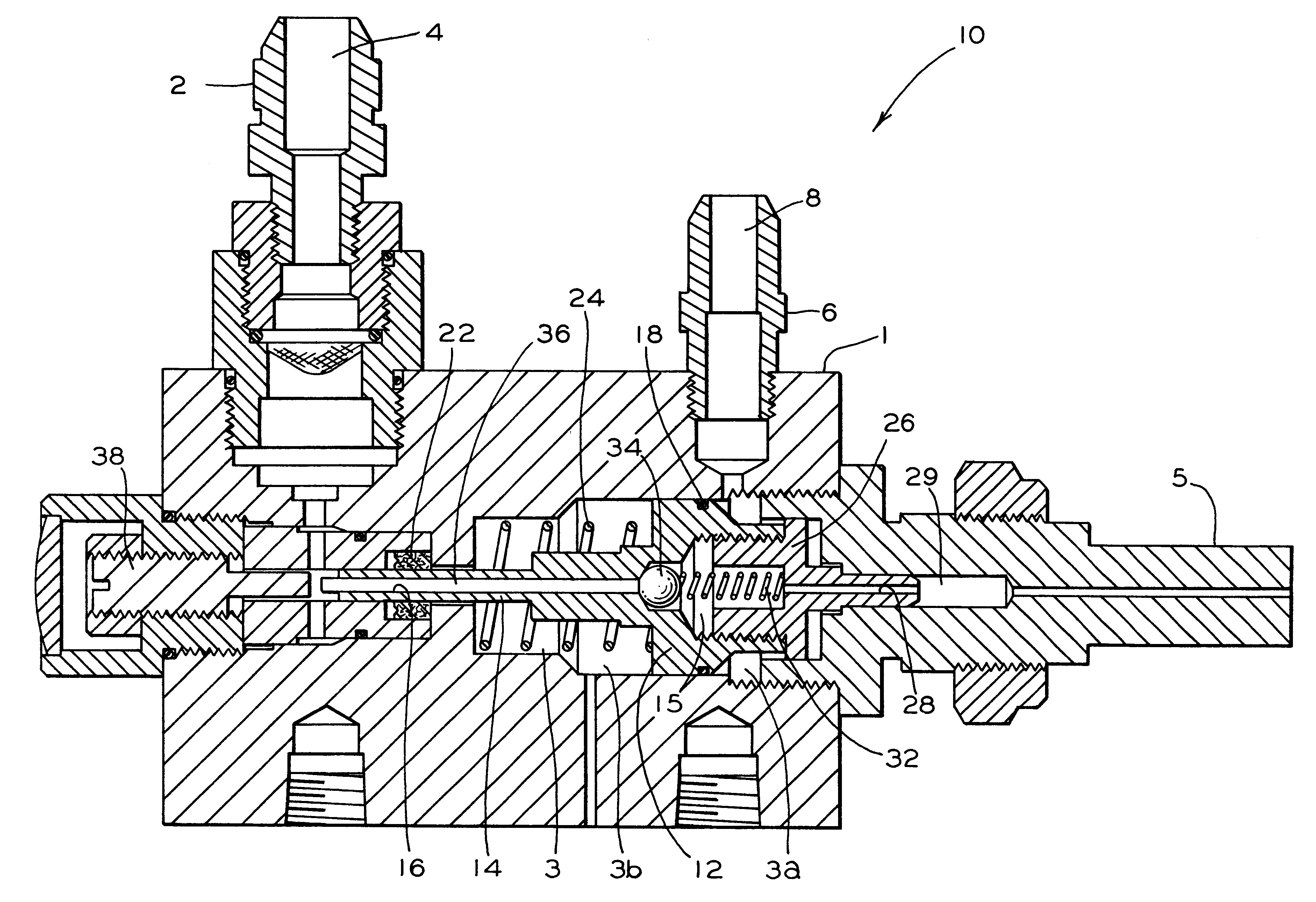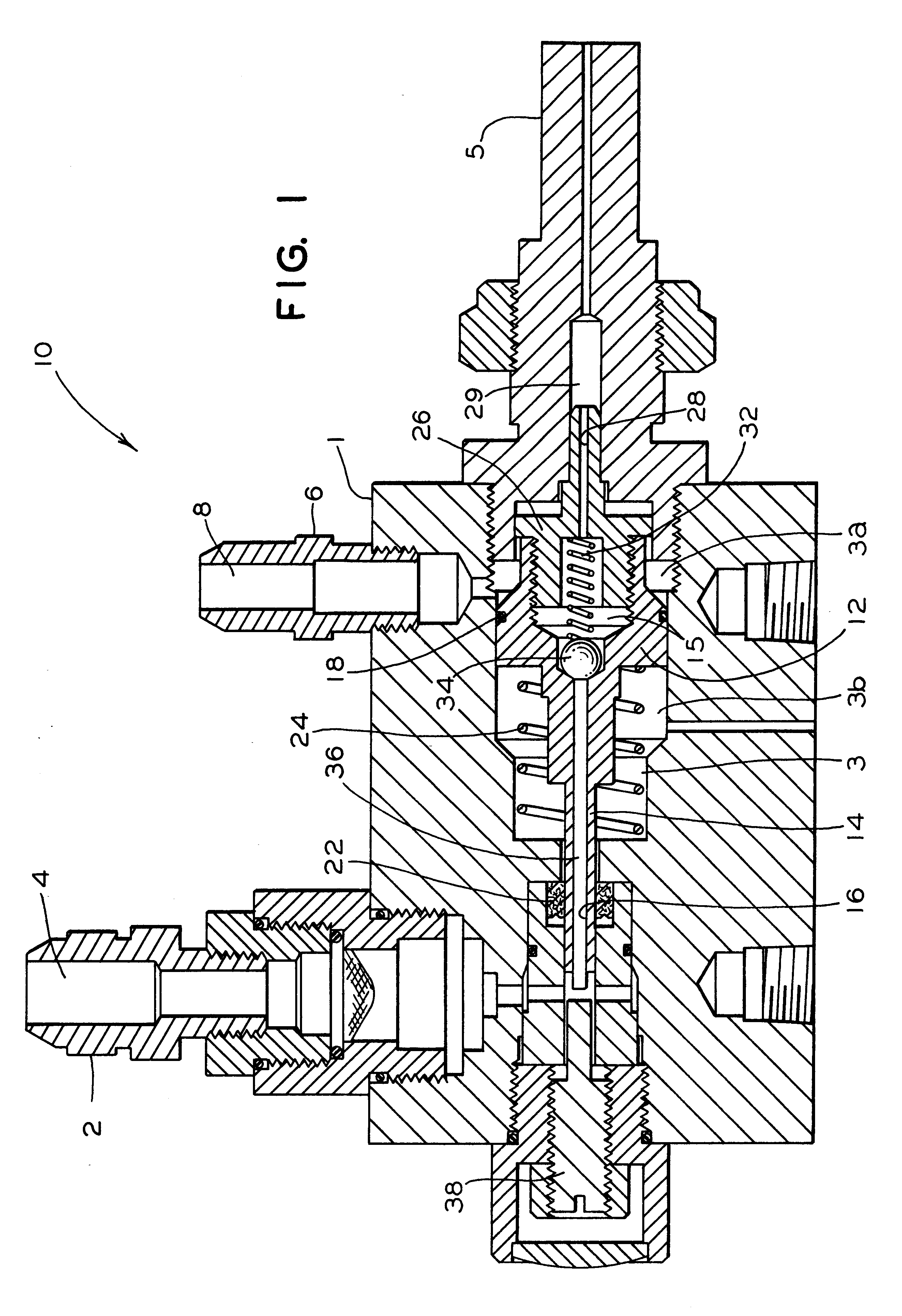Push rod activated grease nozzle
a technology of grease nozzle and push rod, which is applied in the direction of manual lubrication, machines/engines, lighting and heating apparatus, etc., can solve the problems of wheel wear over time, tread wear, and tread wear, so as to achieve the effect of reliably dispense a metered amount of lubrican
- Summary
- Abstract
- Description
- Claims
- Application Information
AI Technical Summary
Benefits of technology
Problems solved by technology
Method used
Image
Examples
Embodiment Construction
Reference is now made to FIG. 1. Illustrated therein is an assembly, generally referred to as 10, according to a first embodiment of the invention. Assembly 10 is used to dispense a lubricant. The lubricant used in the assembly 10 may be a variety of lubricants; however, it is presently preferred that such lubricant is a grease. For convenience the lubricant may be referred to as a grease hereinafter and the words may be interchangeable.
Such assembly 10 comprises a housing member 1 which includes a cavity 3 and a nozzle member 5 connected to the housing 1. The housing member 1 further includes a grease fitting 2 which is connectable to a source of grease under pressure (not shown). Grease fitting 2 has a grease passage 4 which carries grease to the inner part of the housing member 1. There is also an fluid pressure fitting 6 which is connectable to a source of fluid pressure (not shown). Such fluid pressure fitting 6 has a fluid pressure inlet passage 8 which is in fluid communicati...
PUM
 Login to View More
Login to View More Abstract
Description
Claims
Application Information
 Login to View More
Login to View More - R&D
- Intellectual Property
- Life Sciences
- Materials
- Tech Scout
- Unparalleled Data Quality
- Higher Quality Content
- 60% Fewer Hallucinations
Browse by: Latest US Patents, China's latest patents, Technical Efficacy Thesaurus, Application Domain, Technology Topic, Popular Technical Reports.
© 2025 PatSnap. All rights reserved.Legal|Privacy policy|Modern Slavery Act Transparency Statement|Sitemap|About US| Contact US: help@patsnap.com


